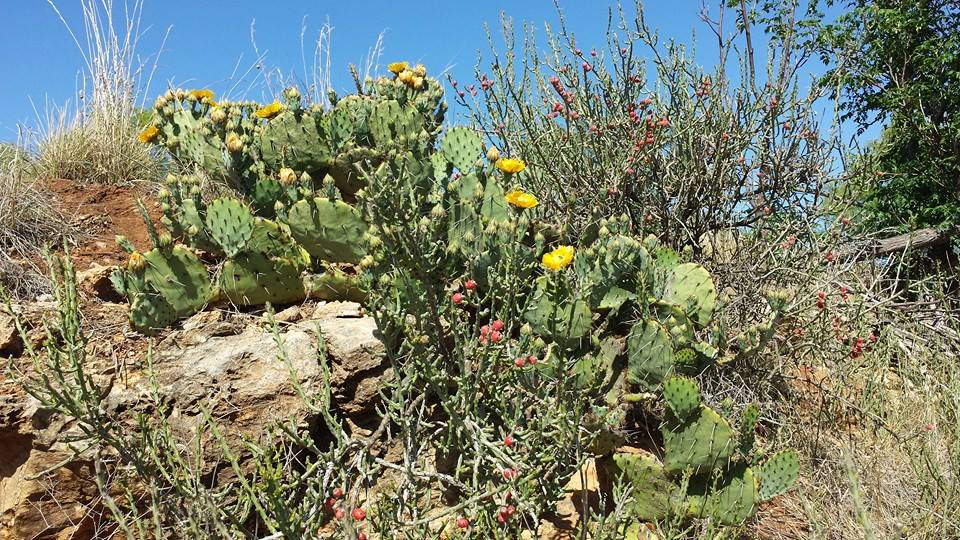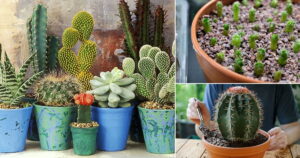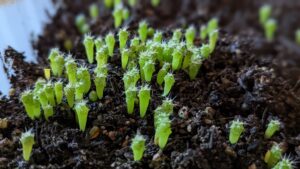Texas, renowned for its vast landscapes and diverse ecosystems, serves as a habitat for a splendid array of flora, among which cacti are prominent. The unique climate and varied geography enable the growth of numerous cactus species, many of which have adapted exceptionally well to the harsh conditions of the region. This article delves into the incredible world of Texas cacti, exploring their characteristics, habitats, and significance.
As one of the most recognizable symbols of the American Southwest, cacti are intriguing plants that have garnered attention not only for their distinctive appearance but also for their survival strategies. In Texas, these hardy succulents are more than just ornamental; they play crucial roles in their ecosystems, providing sustenance for wildlife and enhancing the beauty of the arid landscapes.
A Deep Dive into Cactus Varieties in Texas
The state of Texas boasts a plethora of cactus species, each with its own unique adaptations and characteristics. Here are some of the most notable species found throughout the Lone Star State:
1. The Iconic Saguaro Cactus
While most commonly associated with Arizona, the majestic Saguaro cactus (Carnegiea gigantea) can also be found in parts of Texas, primarily in the far western region. These giants can grow to be over 40 feet tall and can live for over 150 years. They are easily recognized by their iconic arms that reach skyward, serving as a habitat for various birds and insects. These cacti flourish in the Sonoran Desert climate and, due to their towering height and impressive longevity, they have become a symbol of resilience in the harsh desert environment.
2. The Prickly Pear Cactus
Prickly pears (Opuntia spp.) are perhaps the most prevalent and varied group of cacti in Texas. With over 50 species found in the state, these cacti are characterized by their flat pads, vibrant flowers, and edible fruits known as “tunas.” Prickly pears are extremely hardy, capable of thriving in rocky soils and withstanding intense heat. Their bright yellow, red, and purple blooms add a splash of color to the Texas landscape. Furthermore, they have culinary and medicinal uses. The pads can be prepared as a meal, while the fruits can be juiced to make refreshing beverages or preserves.
3. The Cholla Cactus
Cholla cacti (Cylindropuntia spp.) are notable for their segmented stems and striking flowers. Various species, such as the Teddy Bear Cholla, are found in Texas, and they are characterized by their unique appearance and rapid growth. These cacti are often found in clusters, creating a vibrant display in the arid terrain. One of their distinguishing features is their propensity to drop segments when touched, which can easily attach themselves to passersby or animals. Despite their spiny defenses, Cholla cacti provide shelter and sustenance for several birds and small mammals.
4. The Barrel Cactus
Barrel cacti (Ferocactus spp.) are another fascinating variety found in Texas. Shaped like a barrel, these cacti are typically solitary and can vary in height. They are adorned with sharp spines that protect them from herbivores. These cacti bloom stunning flowers, often in shades of yellow or orange, which attract pollinators, including bees and butterflies. Barrel cacti are remarkable for their survival strategies, storing water to endure prolonged drought conditions.
5. The Fishhook Cactus
The Fishhook cactus (Sclerocactus spp.) is a less common, yet striking species residing in the rocky terrains of West Texas. This small cactus is known for its prominent hooked spines resembling fishhooks. Although compact in size, it is an engaging plant that showcases vibrant flowers, typically blooming in shades of pink or white during the spring. The Fishhook cactus has adapted well to the arid environment, utilizing its extensive root system to absorb moisture from the soil and capture rainwater.
Cacti: More Than Just Plants
The significance of cacti in Texas transcends aesthetic appeal. They serve essential ecological roles, acting as habitats and food sources for various species. The fruits of prickly pears, for instance, are a food source for birds, mammals, and insects, while their pads provide cover from predators. Additionally, cacti contribute to soil health by creating shade, which protects delicate plant life underneath from the scorching sun.
In addition to their ecological importance, cacti have practical applications for humans. The pads and fruits of certain species are edible, contributing to traditional dishes and culinary delights for many towns across Texas and beyond. Not only do they introduce vibrant flavors to meals, but they also boast numerous health benefits. Prickly pear, for example, is known to contain antioxidants, vitamins, and other beneficial compounds.
Conclusion: The Resilient Cacti of Texas
In summary, Texas is home to a rich diversity of cactus species, each uniquely adapted to thrive in challenging environments. From the iconic Saguaro to the resilient Prickly Pear, these remarkable plants offer a glimpse into the complexities of life in arid landscapes. As we continue to understand their ecological, culinary, and cultural significance, it becomes increasingly vital to preserve and protect these hardy succulents. Texas cacti not only define the state’s unique geography, but they also embody the spirit of resilience in the face of adversity.





Leave a Comment